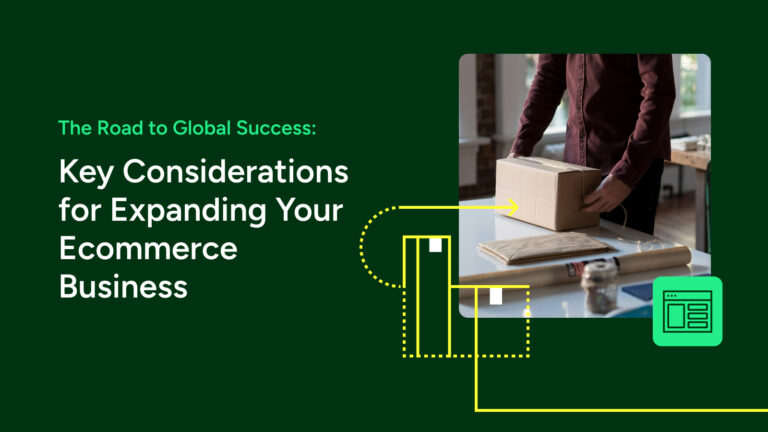How to Start a Subscription Service and Do it Right

This blog was contributed by Sean Flannigan, Digital Marketing Specialist at coolblueweb. coolblueweb is a Seattle-based ecommerce web development agency dedicated to helping online businesses flourish and increase online revenues.

First things first: does it make sense for you to start a subscription service?
Well, start by determining if your product offering is something subscription-friendly. If you sell headlights or hammocks, it may not be the way to go. But if you sell coffee, clothing, or beauty products, you could stand to benefit a great deal from the subscription model.
If you want to start a subscription service, here’s what you need to know.
Why Should I Start a Subscription Service?

Creating a subscription service for your online store can help expand your business and increase your revenue. Many online retailers have taken advantage of the popularity of the subscription model. And you can, too.
A subscription model provides a predictable revenue stream. It also helps you build lasting relationships with your customers. You can gain insights from a customer’s history and personalize recommendations for them. Plus, you can more easily grow the customer’s lifetime value.
What are the Different Subscription Types?

Subscription services vary depending on what you are selling and how you want to sell it. And each one can be very different from each other in execution and complexity.
For ecommerce, there are two different types of subscriptions:
Pay-as-You-Go
A weekly or monthly mix of products that is self-selected, personalized, or a mystery. The appeal is in the convenience and personalization.
Examples:
- Personalized beauty and apparel boxes (e.g., Stitch Fix, Bombfell, Birchbox)
- Produce and meal boxes (e.g., Blue Apron, Imperfect Produce, Green Chef)
- Surprise thematic boxes (e.g., Loot Crate, Funko, FabFitFun)
Autoship (a.ka. Subscribe and Save)
These subscriptions are often born of convenience. The product is something the consumer needs or wants on a regular basis without having to remember to do it.
Examples:
- Coffee
- Vitamins
- Toiletries
What Are the Obstacles to Creating a Successful Subscription Service?

There are risks in not thinking ahead and building a secure bridge to a successful launch. Keep these things in mind as you prepare to execute a subscription model.
Marketing
When developing a marketing campaign, focus on the low transaction cost instead of the annual costs. The customer should understand the long-term benefits of your service’s continued use.
Here are some example value statements:
- If you continue to order our supergreens drink, you’ll become more energetic and healthy.
- With your monthly order of our World Cup Fan Box, you can collect the full set of bobbleheads.
- You will never run out of coffee again when you subscribe to our rotating blend subscription.
- Save 20% on your vitamins when you subscribe.
Take advantage of all appropriate marketing channels to push your new subscription service. A strong email marketing campaign can engage new customers. And it can encourage existing customers to become subscribers. Retargeting, search, and display ads can further entice potential customers.
As the subscription service grows, add social proof and customer testimonials to your marketing. Consumers attesting to a product’s convenience or effectiveness appear more authentic. And unboxing videos are great for building excitement around your products.
Payment Management
Be sure you have a payment method that is flexible to change with the growth of your service. Ask these questions when evaluating your options:
- Can you transfer the payment method to a new system?
- Who controls the recurring payment schedule?
- Can customers easily update payment information on their own?
- Can the customer cancel their subscription without contacting customer service?
- Will your contract automatically renew or need manual renewal?
Flexibility is key in choosing your payment method. Even if you don’t plan on changing systems now, you don’t want to be stuck if you decide to do so later.
If your service provider manages payments, you have less control. However, payment management becomes autonomous. If you control the payments, you need to manage the information on your system.
On the plus side, many platforms have extensions or plugins to accommodate those needs. For example, in our experience, the Woocommerce subscription plugin has a lot to offer. It’s especially powerful when enhanced by custom development.
If possible, allow customers to manage their own accounts. This includes payment information, shipping addresses, and cancellation of service. Giving them this ability improves the customer experience and reduces customer service costs.
One possible issue is customers forgetting to manually renew their subscriptions. As a consequence, your subscriber list will decrease. To avoid an unexpected drop in customers, consider employing subscription auto-renewal. This, along with saved card information, ensures recurring payments continue until the customer chooses to cancel.
Inventory Management and Order Fulfillment
Another sticky issue can be inventory management and order fulfillment. Subscription services can be complex, and avoiding inventory overages or shortages is important. This means you need a robust inventory system.
Regular online sales are a simple transaction. You have products, a customer makes a purchase, and you ship their order. The item is now no longer in your inventory. A subscription service adds a layer of complexity to this equation. The inventory system must be able to track inventory for current orders and reserve inventory for future orders.
The time between when a customer places the order and when you ship it is crucial. With a longer time frame, you can more accurately plan to avoid overages and shortages. If that time is too short, you risk stock overages and not being able to fulfill orders.
It’s important to use forecasting for future growth to properly plan inventory. You can also limit the cancellation period. This allows time to order enough stock for the next ship date.
Timing
Timing is a critical part of the subscription model. Before rolling out your program, make certain everything is in order.
Here are some questions you can ask yourself:
→ Is the fulfillment date based on the ship date or the arrival date?
Customers usually prefer to know expected delivery date, not ship date.
→ Do all subscriptions start at the same time or are they staggered?
Some companies need customers to receive the box at the same time to maintain the surprise. They must ship on a condensed schedule, and their system has to be able to accommodate this.
Some companies must ship with freshness in mind. So they need to fulfill orders in just one or two days of packaging.
Other companies can treat subscription orders like any other order. They don’t need to make changes to fulfillment.
→ If all subscriptions start at the same time, can your system handle payments and shipments on the same days?
→ Does the first shipment date depend on when the customer placed their first order?
If so, your system must have the logic required to run the subscription smoothly.
→ Is the timing you chose scalable?
→ What is the window of time the customer can cancel their renewal?
If they can cancel up to the renewal date, know how this affects purchasing decisions.
→ Can you manage order forecasting to limit inventory shortages or overages?
→ Do you have scheduled advertising in place for launch?
This includes email marketing, display, search, and retargeting campaigns.
Conclusion
If you have a product that is a great fit for a subscription service, this model may have a lot to offer your business. Use your excitement to execute it in the most thoughtful way possible. If you’ve thought out all the solutions ahead of time, the launch of your shiny new subscription service will go off without a hitch.



